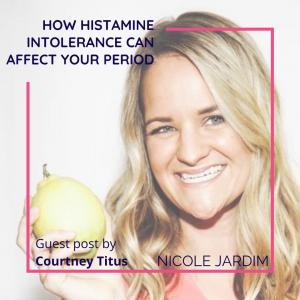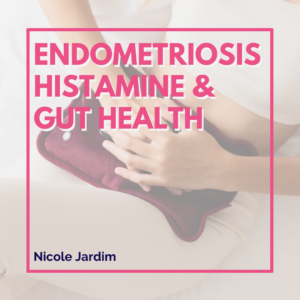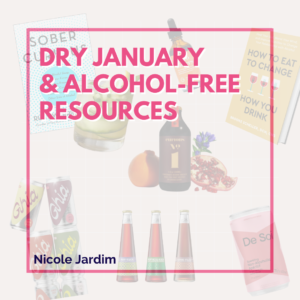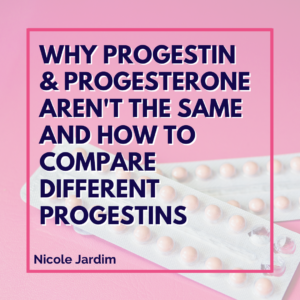Written by my Spring 2018 apprentice, Courtney Titus. a Women’s Holistic Health Coach, who believes that no one should feel like they don’t understand their own body and she is here to help you understand yours.
Have you noticed brain fog, bloating and migraine headaches around ovulation? It could be histamine intolerance.
Throughout my wellness journey, I have tried several different diets, fat free plant based vegan, high carb, low protein, South Beach and many more. From 2015- 2017 I was fat free plant based vegan (I know you’re thinking, OMG that so intense! Believe me, I know), and this way of eating made me hungry, ALL THE TIME. I was experiencing terrible PMS, including bloating, mood swings and diarrhoea.
As I was learning more about healthy fats and their role in balanced hormones, I started reintroducing eggs, fish, and high quality oils like coconut into my diet. I started to feel better, I had more energy and finally felt satiated after a meal. Gradually, my PMS became more tolerable, but this past March I started having mid cycle pain. I was experiencing fatigue, bloating and cramps, WHAT IN THE?! All the PMS symptoms, but my period wasn’t due for two more weeks and my cycle is always normal.
Do you ever feel like you want to know what’s wrong and you’re researching like a mad woman and when you find your answer, you wish you didn’t?
In April, I got my answer when Nicole Jardim and Lara Briden hosted an event in Los Angeles all about hormones. I expressed to them my frustrations and they both mentioned histamine intolerance.
What is Histamine Intolerance?
Histamine is an immune signaling protein that causes allergies and swelling, but it plays other roles too, like regulating stomach acid, stimulating the brain and boosting libido. It’s released from mast cells which are present in every tissue in the body.
These cells have various roles, but they are most recognized for releasing histamine in activation of the immune system. Mast cells are plentiful in areas of the body that are exposed to the environment, like skin, airways and the gastrointestinal tract.
Interesting fact – many people who suffer from small intestine bacteria overgrowth (SIBO) or leaky gut are more susceptible to histamine intolerance.
Histamine and Estrogen
Various studies have shown that estrogen, particularly in the form of estradiol, can stimulate mast cells. Histamine intolerance and estrogen dominance go hand in hand. When estrogen is high in relation to progesterone it increases histamine, making symptoms more prominent, especially around ovulation and bleeding. Estrogen stimulates masts cells to make histamine and simultaneously reduces the diamine oxidase (DAO) enzyme and monoamine oxidase (MAO) which breaks down histamine.
Histamine then stimulates production of more estrogen, by assisting the release of luteinizing hormone (LH), which is needed for ovulation. Then, LH causes a gradual increase in estrogen. It’s a vicious cycle, when estrogen rises, histamine rises.
Estrogen surges occur:
- Around ovulation
- Right before your period
- When you are exposed to an abundance of xenoestrogens (Check out my blog all about this)
- From use of hormonal birth control pills
- From chronic stress
What does high histamine do?
A buildup of histamine in the body can cause symptoms like brain fog, hives, heavy periods, PMS, migraines, insomnia, anxiety and flushing. Personally, I was experiencing brain fog, migraines and anxiety more than I ever have and these symptoms worsened around ovulation.
I was so frustrated with my body because I thought I was doing everything right. My diet is full of organic whole foods and no dairy, I exercise 5 times a week, I’m hydrated and I take supplements to fill in the gaps. WHAT GIVES?!
Well, I was eating bananas almost every day along with avocados, tomatoes, spinach, ferments like sauerkraut, peanut butter, dark chocolate and citrus fruits.
Seriously?! These were staples in my diet and they were all working AGAINST me! All of these foods raise histamine in the body, and since I am dealing with some estrogen dominance as well, I was caught in this crazy cycle. I felt like a failure, I felt defeated. I am a nutrition coach and my diet is all wrong for me?!
One person’s food can really be another person’s poison.
This statement never felt true for me until now. These are all healthy, nutrient dense foods, but they were doing a disservice to me. I have since cut out all of the foods I mentioned earlier, including these:
Foods That Increase Histamine
- Beer, wine, alcohol, champagne
- Anything pickled or fermented like kimchi and sauerkraut
- Cured and smoked meats like sausage, cold cuts and pepperoni
- Eggplant, avocado & tomatoes
- Vinegar
- Shellfish
- Citrus fruits
- Canned or frozen fish like tuna
- Nuts- walnuts and cashews
- Beans and pulses like peanuts and chickpeas
- Matured cheeses
- Additives like sulphites, nitrites and food dyes
Diamine Oxidase (DAO) Blockers:
- Alcohol
- Black tea
- Energy drinks
- Green tea
- Mate tea
Debatable Histamine Foods:
- Yogurt
- Egg whites but only in a raw state
How it is working for me
This is a very restrictive diet and it has not been easy, but it has been worth it. I’ve had a few slip ups, but overall it’s helping me to understand which foods are causing my reactions.
Keeping a food log is key, including the times you eat is very helpful too. I learned from food logging that I get the most noticeable reactions from tomatoes, spinach, peanuts, red wine and coconut yogurt.
Since cutting all this completely out, my anxiety is much less severe, my brain fog and overwhelming fatigue has overall subsided and I only get a headache right before my period. If you suspect you have a histamine intolerance, here are some other tips to get started:
- Cook all your own foods
- Eat as fresh as possible
- Avoid junk and processed foods
- Talk to a professional about vitamins and mineral supplements that can help like DAO enzyme, vitamin B6, vitamin C, copper, quercetin and zinc.
- Fresh ginger, apples and vitamin C can help to lower histamine when you are experiencing a reaction.
This diet should not be followed for more than 4 weeks, at which time you can reintroduce these foods one at a time and continue using a food log to track any symptoms or reactions. If you feel like histamine intolerance is something that could be affecting you, you can find me at www.courtneytitus.com
References:
www.Histamineintolerance.org.uk
About Courtney:
Courtney takes into account the “big picture,” including all aspects of your life and wellness journey. Her programs incorporate nutrition, fitness, stress reduction and cultivating a more positive mindset. Courtney has had success helping clients of all ages with chronic diseases such as obesity, Type 2 diabetes, heart disease and hormonal issues like PMS and PCOS. She is currently the Clinical Director of Wellness for the largest Gastroenterology practice in Los Angeles and working hard to bridge the gap between conventional and integrative healthcare. Courtney was trained by the Institute of Integrative Nutrition and formerly worked for the Whole Foods Market Medical & Wellness Center as an Integrative Health Coach. In her spare time she enjoys road trips, concerts and salsa dancing.
You can learn more about Courtney and her personal wellness journey on her website
www.courtneytitus.com or by following her on Instagram




6 thoughts on “How Histamine Intolerance Can Affect Your Period”
Oh my goodness, this is so helpful! I’m 42 and I’m currently ovulating. I’ve had a horrible day of being incredibly bloated and feeling so nauseous and exhausted. I, too, have a banana every day. I ate cashews with my dinner last night, and also put some pineapple in my smoothie this morning. This might explain why I’ve felt so much worse today. I’m going to give this a go and see if it helps. Thank you!
Thank you so much Courtney for mentioning about ovulation pain. So, after following the diet and supplements , are you able to get rid of ovulation pain?
Dear Courtney, All I can say is THANK YOU for such an informative post. I’ve read it about 5 times now and it is marked as a favourite. I have felt so alone with my ovulation pain so reading this filled me with comfort. Six days of intense pain (alternating sides each month) where it hurts to walk down my hallway or sit up in bed in the morning. It’s as if the ovary is painfully swollen and then it is accompanied with brain fog, migraine, bloating just as you explained. My Gyno has suggested inducing early menopause! I am so willing to give all that you mention a go and see if I can benefit from the changes. One question, are seeds to be eliminated along with the nuts?
Hey there! I really hope it helps you! You don’t have to eliminate all nuts just cashews and walnuts, as they increase histamine. Keep me posted on your wellness journey. Sending love and support!
Thank you Alison, If she has any questions please reach out to my website!
Great blog entry, Courtney❣️ Very impressive science you spelled out for us. I’m forwarding it to my daughter as you listed pretty much everything she eats right now! Thanks!!